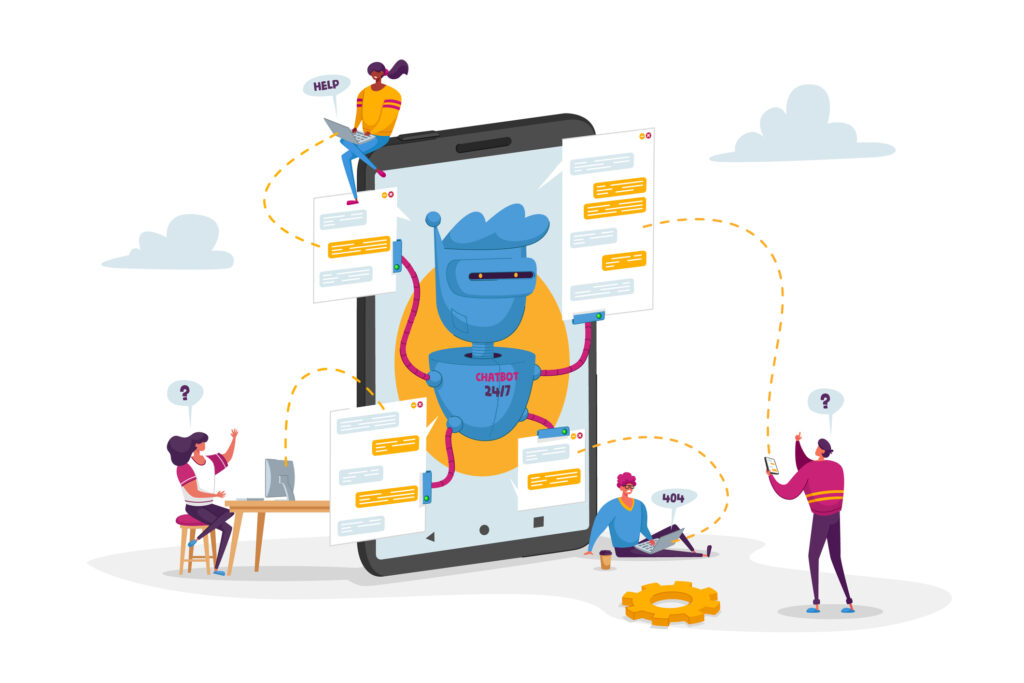Introduction
The landscape of Information Technology (IT) has undergone a radical transformation over the past few years, prompted by the advent of cloud computing, microservices architecture, containerization, and now, the Internet of Things (IoT). The traditional approach to managing IT operations—meticulous manual monitoring and routine maintenance—has grown increasingly untenable. Given the complexity and dynamism of modern IT ecosystems, human-led processes are becoming error-prone, slow, and costly.
Enter AIOps—Artificial Intelligence for IT Operations. AIOps uses machine learning algorithms, data analytics, and various other forms of artificial intelligence to automate the analysis and management of big data from IT operations tools. By leveraging AIOps, organizations can revolutionize their IT infrastructure, making it more resilient, efficient, and ultimately more effective. This article delves into the nuances of AIOps and explores how it redefines IT operations in contemporary organizations.
What is AIOps?
AIOps stands for Artificial Intelligence for IT Operations, a term initially coined by Gartner. It represents a multi-layered technology platform that automates and enhances IT operations by applying analytics and machine learning to data collected from various IT operations tools and devices. By scrutinizing this data in real-time, AIOps allows for the automation of various tasks, anomaly detection, event correlation, and predictive analysis.
Key Components
- Data Ingestion: Collects data from various sources like logs, metrics, and alerts.
- Machine Learning Algorithms: Helps in understanding patterns and making predictions.
- Automation Engine: Allows for task automation and orchestration.
- Visualization Tools: Provides dashboards and visual insights into IT operations.
The Challenges AIOps Addresses
Complexity
The intricate network of servers, databases, cloud services, and other components that make up modern IT ecosystems are increasingly difficult to manage manually. Every added technology layer adds complexity that can bog down operations and increase the risk of errors or system failures. AIOps uses machine learning algorithms to make sense of this complexity. It can sort through massive datasets, correlating information to pinpoint where issues might arise or identify inefficiencies. This capability is critical for managing multi-cloud environments and container orchestrations like Kubernetes and microservices architectures. The advent of AIOps brings a new dawn of operational efficiency, unburdening IT personnel from the shackles of endless data analysis and troubleshooting. By leveraging predictive analytics, AIOps can forewarn potential system glitches, allowing for preemptive measures to ensure uninterrupted service delivery. Moreover, the holistic view AIOps provides across different system components fosters enhanced decision-making, ensuring resources are optimally utilized and system performance is at its zenith.
Speed
Time is often of the essence in IT operations. System downtimes can lead to significant revenue loss and degrade customer trust. Traditional IT operations are reactive, responding to issues as they occur, often resulting in slower resolution times. AIOps, on the other hand, is designed for real-time analysis. It can rapidly sift through data, identify issues, and even automate solutions before a problem escalates into a crisis. The accelerated problem-solving brought about by AIOps is a monumental leap toward bolstering system reliability and customer satisfaction. Furthermore, the automation of routine tasks ensures that IT personnel can dedicate their time to more strategic, revenue-generating endeavors. The agility afforded by AIOps in troubleshooting and resolution significantly cuts down the Mean Time to Resolution (MTTR), a crucial metric in IT operational excellence.
Skill Gap
The constantly evolving technology landscape makes it challenging for IT professionals to keep up. New tools, languages, and methodologies appear continually, requiring constant upskilling. Specialized roles like cybersecurity analysts, cloud architects, and database administrators are often hard to fill due to a shortage of qualified professionals. AIOps can take on more technical, repetitive tasks, allowing IT staff to focus on higher-value activities. In doing so, it acts as a force multiplier, amplifying the effectiveness of the IT team. The automation and intelligence encapsulated in AIOps ensure a consistent and high-quality output, irrespective of the skill gap. Moreover, it provides a learning curve for IT professionals to understand and adapt to new technologies under a safety net, reducing the risks associated with the learning phase. By handling the mundane and repetitive, AIOps liberates the creative and innovative human potential, driving the organization forward in a competitive landscape.
The Benefits of AIOps
Proactive Problem-Solving
AIOps transforms IT operations from a reactive to a proactive model. Traditional IT monitoring tools generate alerts for predefined conditions, often flooding teams with false alarms or trivial issues. AIOps goes beyond this by learning from the data it analyzes, enabling it to forecast issues and trends. Such predictive analytics can identify potential system bottlenecks, server overloads, or security vulnerabilities, allowing teams to solve problems before they impact the organization. The predictive prowess of AIOps is akin to having a crystal ball, providing invaluable foresight in a realm where unexpected disruptions can have monumental repercussions. Moreover, by reducing the noise and focusing on issues of substance, AIOps facilitates a more focused and effective operational approach. The proactive nature of AIOps cultivates a culture of continuous improvement, as insights derived fuel refinements and optimization strategies.
Efficiency and Cost Savings
The automation capabilities of AIOps are a game-changer for IT operational efficiency. AIOps frees up human resources for more strategic work by eliminating the need for constant manual monitoring. This shift not only boosts employee satisfaction but also contributes to cost savings. Organizations can maintain a leaner IT department without sacrificing performance or reliability. The cost-effectiveness of AIOps is not just a short-term gain; it’s a long-term investment that keeps giving returns by continuously optimizing operations and reducing operational expenditure. Moreover, the insights provided by AIOps can guide budget allocations, ensuring funds are channeled towards areas that yield the maximum return on investment. AIOps is a quintessential tool in modernizing IT operations, aligning them with the organization’s financial goals.
Improved Customer Experience
Optimized IT operations have a direct positive impact on the customer experience. When systems run smoothly, applications load faster, transactions process without hiccups, and downtimes are rare. All these factors contribute to customer satisfaction and loyalty, which are critical for competitive advantage. In an era where customer expectations are soaring, delivering a seamless and robust user experience is paramount to fostering loyalty and enhancing brand perception. AIOps stands at the fulcrum of this customer-centric approach, ensuring systems are operational and optimized for performance. Additionally, the ability of AIOps to predict and prevent issues means that customers enjoy a consistent and reliable interaction with the service, which, in the long run, cultivates trust and advocacy.
Scalability
As organizations grow, their IT infrastructure must scale proportionally. AIOps platforms are inherently designed to handle increasing data volumes and complexity without linear increases in costs or resources. As new technologies and platforms are integrated into an existing IT landscape, AIOps can adapt without requiring a complete overhaul, thereby future-proofing IT operations. The seamless scalability of AIOps facilitates a cornerstone for organizations eyeing growth and expansion without being bogged down by IT constraints. Moreover, AIOps’ ability to integrate with emerging technologies ensures that the organization remains technologically relevant and competitive. The architecture of AIOps platforms is designed to evolve, making them a reliable partner in an organization’s growth trajectory, ensuring IT operations are streamlined, irrespective of the scale of operations.
Implementing AIOps: Best Practices
Start Small
Embarking on an AIOps journey is a significant commitment and should be approached incrementally. Choose a single pain point—like incident management or performance monitoring—as your starting focus. Roll out the AIOps tool for this area, gauge its effectiveness, gather feedback, and fine-tune the algorithms. Once confident in the initial implementation, you can extend the AIOps platform to other areas of IT operations. This modular approach towards AIOps implementation reduces the risk and enables a smoother transition towards a fully automated IT operations environment. Moreover, the lessons learned from the initial implementation can be invaluable in ensuring the success of subsequent rollouts. The evolutionary approach towards AIOps ensures that the organization, its processes, and its people mature with the technology, fostering a conducive environment for success.
Ensure Data Quality
Machine learning algorithms are highly dependent on the quality of data they analyze. Therefore, ensuring data quality is paramount. Scrutinize the data sources feeding into your AIOps platform, clean out redundant or irrelevant data, and ensure the data is well-structured. Implement data validation checks to maintain high-quality data over time. The integrity of the data is the foundation upon which AIOps operates; any compromise on data quality can lead to incorrect analysis, faulty predictions, and operational failures. Moreover, having a robust data governance framework in place not only ensures data quality but also compliance with regulatory requirements. Ensuring data quality is not a one-off task but a continuous endeavor, necessitating a concerted effort across the organization to maintain the high standards required for successful AIOps implementation.
Involve Key Stakeholders
An AIOps transformation is a technical undertaking and a strategic organizational shift. Involve key stakeholders in decision-making, including business leaders, IT managers, and frontline staff. Ensure everyone understands the goals, risks, and benefits of adopting AIOps. The symbiotic relationship between AIOps and organizational processes means that a holistic approach to AIOps implementation is imperative for realizing its full potential. Furthermore, involving key stakeholders fosters a sense of ownership and engagement, which is crucial for navigating the change management associated with AIOps adoption. The collective wisdom of stakeholders from different facets of the organization can provide invaluable insights, ensuring that the AIOps implementation is aligned with the organizational objectives and is poised for success.
Continuous Learning
Machine learning models require continuous training to adapt to new challenges and scenarios. Allocate resources for ongoing data validation, model tuning, and retraining. Consider engaging external experts for periodic audits and fine-tuning of your AIOps implementation. The landscape of IT operations is in constant flux, necessitating a culture of continuous learning and adaptation to stay ahead of the curve. Moreover, the feedback loop created through continuous learning is a catalyst for AIOps evolution, ensuring it remains relevant and effective in addressing the challenges faced by IT operations. Investing in continuous learning is an investment in sustainability, ensuring that the organization remains resilient and adaptable, irrespective of the challenges thrown its way.
Conclusion
The digital transformation in the IT sector has ushered in a new era, with AIOps at its core, embodying agility, foresight, and efficiency. By automating routine tasks, providing real-time analysis, and forecasting potential issues, AIOps transition IT operations from a reactive to a proactive domain.
This article navigated the realms of AIOps, elucidating its key components, the challenges it addresses, the benefits it bestows, and the pragmatic approach towards its implementation. The narrative underscores AIOps as a catalyst for modernized IT operations, promising seamless operational conduct, enhanced customer satisfaction, and cost-effectiveness.
The discussion on AIOps implementation provided a blueprint for organizations aspiring to harness this futuristic approach. The principles of incremental implementation, data quality assurance, stakeholder involvement, and continuous learning outlined are stepping stones towards adopting AIOps and fostering a culture of continuous improvement and readiness for future challenges.
AIOps is more than a technology; it’s a vision towards a smarter, efficient, and resilient IT ecosystem. It’s about creating a binding between technology and human expertise, preparing organizations to address present challenges, and preparing for future contingencies. As AIOps transition from being a competitive edge to an operational necessity, it leads toward a promising and imperative future in IT operations.




